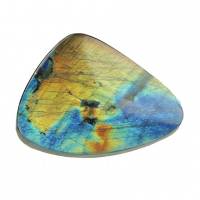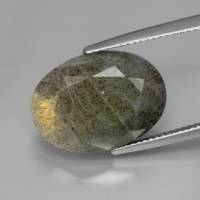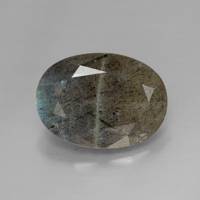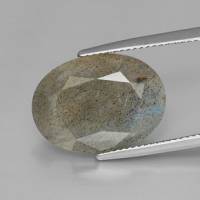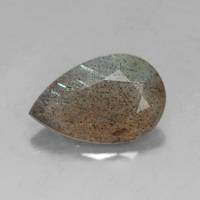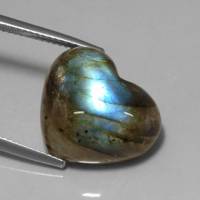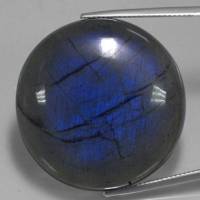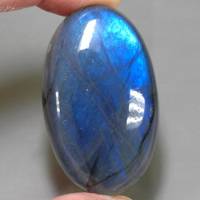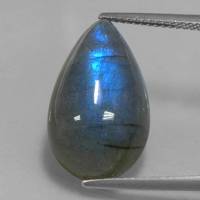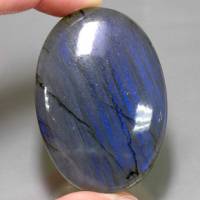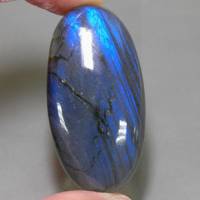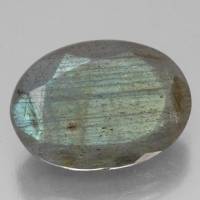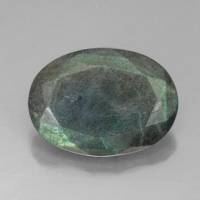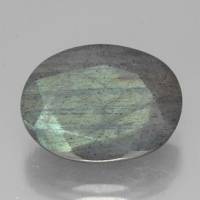Labradorite
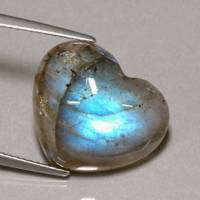
Madagascar
9.6 carats
© gemselect.com
Labradorite was named after peninsula of Labrador in Canada, where it was first found.
It shows labradorescence - a shiller effect in lustrous metallic tints, often blue and green, and sometimes the complete spectrum. This effect is caused by interference of light from lattice distortions resulting from alternating microscopic exsolution lamellae of high- and low-calcium plagioclase phases.
Labradorite Gemstones by Colour
This table shows the variety of hues this gemstone can be found in. Click on a photo for more information.
Labradorite Gemstones by Size
This table shows distribution of Labradorite gemstone sizes that are listed on this site. This can give a good indication as to the general availability of this gemstone in different sizes.
Contributed photos
Lightest:2.53 cts
Heaviest:145.2 cts
Average:34.79 cts
Total photos:21
Do you have a larger Labradorite? Why not upload a photo?
| General Information | ||||||||||
|---|---|---|---|---|---|---|---|---|---|---|
| A variety or type of: | Feldspar | |||||||||
| Varieties/Types: | Spectrolite - Trade name for a Labradorite from Finland that shows the spectral colours especially effectively. | |||||||||
| Chemical Formula |
| |||||||||
| Physical Properties of Labradorite | ||||||||||
| Mohs Hardness | 6 to 6.5, Blue Chart Gem Identification (2010) More from other references | |||||||||
| Specific Gravity | 2.69 to 2.72, Blue Chart Gem Identification (2010) More from other references | |||||||||
| Tenacity | Brittle, Gems, Sixth Edition (2006) | |||||||||
| Cleavage Quality | Perfect, Gemmological Tables (2004) More from other references | |||||||||
| Fracture | Uneven, Gems, Sixth Edition (2006) | |||||||||
| Refractive Index | 1.554 to 1.573, Blue Chart Gem Identification (2010) More from other references | |||||||||
| Optical Character | Biaxial/+, Blue Chart Gem Identification (2010) More from other references | |||||||||
| Birefringence | 0.007 to 0.011, Blue Chart Gem Identification (2010) More from other references | |||||||||
| Pleochroism | From the Congo, red stones show weak pleochroism whilst greenstones have distinct greenish yellow to bluish green pleochroism, Gems, Sixth Edition (2006) | |||||||||
| Dispersion | Fatal error: Uncaught mysqli_sql_exception: Illegal mix of collations (latin1_swedish_ci,IMPLICIT) and (utf8mb3_general_ci,COERCIBLE) for operation '=' in /var/www/gemdat/gemshow_class.php:690 Stack trace: #0 /var/www/gemdat/gemshow_class.php(690): mysqli->query() #1 /var/www/gemdat/gemshow_class.php(505): gemshow_class->showdata() #2 /var/www/gemdat/gemshow_class.php(1469): gemshow_class->showblock() #3 /var/www/gemdat/gshow.php(151): gemshow_class->do_optical() #4 {main} thrown in /var/www/gemdat/gemshow_class.php on line 690 | |||||||||


